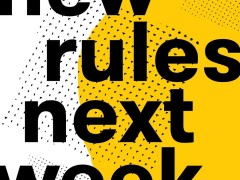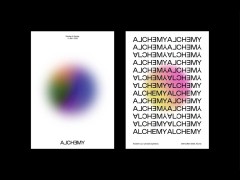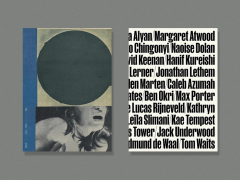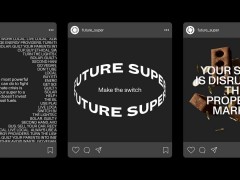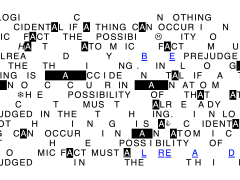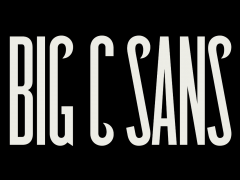Sometimes Always X KW Institute for Contemporary Art: from digital to analog, Open Secret’s visual identity is inspired by Apple’s seminal campaigns
Circa 2021 the KW Institute for Contemporary Art, also known as Kunst-Werke Berlin, commissioned Sometimes Always to provide a visual identity for ‘Open Secret,’ a six-month-long digital program that “explores images of the technological hidden in our apparently ‘open’ society.” A year later, the project is archived in book format with its editorial design following the same values and aesthetics as its online counterpart.
Invited by curator Nadim Samman, the design practice was in charge of creating the visual identity and web design for a project that “critically examines the digital infrastructures that organize civic life.”
“Open Secret’s visual identity is inspired by Apple’s 1980s and 1990s advertising campaigns and by the work of controversial adman Tom McElligott. The website itself was designed to convey the idea of espionage and oppression with subtlety, under a goodwill camouflage aesthetic. Some elements are hidden, others are visible” explains Sometimes Always. “This hide-and-seek game added to the time count of each material to be published keeps users on hold over the length of the project. It also adds a mutant character to the homepage that will become more imagery based with time. Moreover, some parameters can be changed by the user according to their preferences. These parameters are color combination, tracking, language, and text size. Finally, all users can be tracked through their mouse cursors, visible to anyone online.”
Sometimes Always X Public Records: this bold design system is heavily rooted in sharp typography
Coded by Fluxo and designed in collaboration with Solenn Robic, the website is a trip down an inspiring spiral that provides reasons to question our tech-obsessed society and dynamics. Eventually, its distinct content is available to own in book format with Sometimes Always infusing the project’s distinctive digital design approach into paper.
“The possibility of printing a catalogue came at the last minute” Sometimes Always notes. “Together with Solenn Robic and Léonie Montjarret, our intern at that time, we designed a 400 pages black and white book that can be read as a sort of translation (or transposition) of the original website. Visual components such as repetition, infinite scroll, and disproportionated elements were chosen to highlight one of the project’s core ideas, the digital infrastructures that organize our civic lifes.”
Featuring a debossed cover on metallic paper “that evokes security apparatus like vaults or weapons,” the book is typeset in a mix of classic ITC Garamond Narrow and modern classic Favorit, a straightforward, low-contrast grotesque that combines geometric rigidity with subtle oddities by Swiss type design agency Dinamo. “Together with a very diverse imagery and shadow/glow effects, these typefaces are assembled in a very strict column grid with minimum margins” explains the graphic design and art direction practice working between São Paulo and Berlin but acting internationally aka Sometimes Always.
“Ours is a culture obsessed with the unseen, the inaccessible, and the known-unknown” reads Samman’s intro to this bold ‘Open Secret’ project.
“Technology is supposed to increase our access to knowledge, making the world more legible, while undermining ignorance and superstition. At least, that’s what we are told. But it sometimes feels like we have entered a new dark age of black boxes. In computer science, a black box is a unit of software or hardware that interacts entirely through its interface. What happens inside it is opaque; veiled in shadow. Users of black boxes may only partially understand how they work, but can easily observe their effects on the world. There is drama—desire, disappointment, and uncertainty—in coming to terms with these effects. Contemporary intellectual labor is frequently defined by attending a black box as it works on you. The resulting black box culture is marked by affective responses: wonder, paranoia, mythopoesis, and so on. Black boxes are key props in the personal-political drama of being shut out from a hidden order of reality—unable to access or read its code. As we make our way through a landscape of inscrutable machines (and the life they make for us) we attempt to come to terms with them through incommensurate means, projecting wishes, insecurities, and analogies of what they might be onto them” he adds.
Open Secret welcomes you here.
Explore more Sometimes Always work here.
Tags/ typography, graphic design, typefaces, technology, visual identity, book, apple, website, editorial design, sometimes always, kw institute for contemporary art

